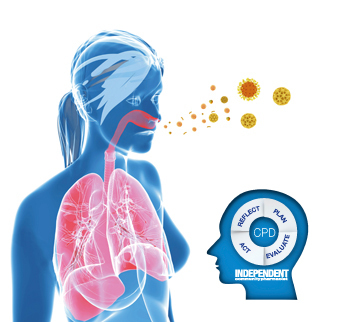In Clinical
Bookmark
Around a fifth of the population has a respiratory allergy. Hay fever, or seasonal allergic rhinitis (SAR), is a response to airborne pollen or external mould spores which trigger the body's immune system into producing Immunoglobulin E (IgE) antibodies. Some people with hay fever also experience year-round perennial allergic rhinitis due to animal dander, household dust mite residue or indoor moulds.
A pan-European study from 2015 involving 1,000 SAR patients found that those with moderate or severe SAR had significantly more symptomatic episodes than those with mild SAR (8.0 versus 6.0 per annum), and that episode duration was longer (12.5 versus 9.8 days). In addition, those with moderate/severe SAR were more likely to use two or more medicines to manage symptoms (70.5 versus 56.1 per cent). These patients were also more likely to visit their GP (1.61 versus 1.19 times a year) because of dissatisfaction with therapy in a third of cases.
More than 80 per cent of people with asthma in the UK also have hay fever. An Asthma UK survey in 2016 reported that half of those with asthma have had a life threatening asthma attack because of their hay fever. Patients who have asthma as a co-morbidity reported that they needed to increase their asthma reliever (half of patients) and controller-medication (one in five patients) if they did not take their rhinitis medication.
In addition to healthcare costs, it is estimated that people with seasonal allergic rhinitis miss an average of 4.1 days a year from work each year, costing £1.25 billion annually. Output may also be impaired due to 'presenteeism': people with SAR go to work on average 37.7 days a year while experiencing symptoms.

